What’s the Best Dining Table Shape for Your Space? A Complete Guide to Choosing the Right One
Disclosure: As an Amazon Associate I earn from qualifying purchases. This post may contain affiliate links, which means I may earn a small commission if you click through and make a purchase – at no extra cost to you.
Choosing the right dining table shape is more than just a design decision. It sets the tone for every meal, celebration, and gathering that happens in your home. Whether you’re working with a small apartment nook or a large open dining area, the table you choose becomes the heart of your space. Today, we’ll explore the most popular shapes, round, rectangular, square, and oval, to help you find the one that fits both your style and lifestyle!
The 2-Minute Room-Measure Formula (with example)
A table feels right when people can pull out chairs and still walk behind them. Measure your room (length × width), then subtract 72 in / 180 cm from each dimension to allow 36 in / 90 cm of clearance on all sides for chair pull-out + walkway. The size that’s left is your max table footprint, and your table should land 8–12 in / 20-30 cm smaller than that for breathing room.
Example: Room = 12′ × 10′ (144 × 120 in).
144 – 72 = 72 in; 120 – 72 = 48 in → max footprint 72″ × 48″.
Choose a table around 60–66″ × 36–40″ to keep it airy.
Quick guardrails: table height 28–30 in / 71–76 cm, chair seat height 17–19 in / 43–48 cm (you want 10-12 in / 25-30 cm knee clearance under the apron).
Seating & Clearance Cheatsheet (what actually fits)
Use this as your sanity check once you love a table online. It removes 90% of “it looked smaller in photos.”
- Chair pull-out: ~24 in / 60 cm per person
- Walkway behind chairs: 36–44 in / 90–110 cm
- Comfortable capacity by size:
- Round: 42″ = 4 | 48″ = 4–5 | 54″ = 5–6 | 60″ = 6–8
- Rectangle/Oval: 60×36″ = 4–6 | 72×36–38″ = 6 | 84×38–40″ = 8 | 96×40″ = 8–10
- Max practical width for passing dishes: 38–40 in / 97–102 cm
When these numbers work on paper, the table works in real life.
1. Round Dining Tables: Perfect for Conversation and Coziness
There’s something naturally intimate about a round dining table. Everyone can see and talk to each other easily, which makes it perfect for family dinners or small gatherings with friends. If you love hosting brunch or wine nights, the soft circular shape creates a relaxed flow where no one feels left out.
Round tables also soften the lines in a modern or minimalist home, balancing straight edges with warmth and approachability. However, they usually seat fewer people, so if you love big dinner parties, it might feel a little tight.
Best for: Smaller dining rooms, open layouts, or square-shaped spaces.
Pro tip: Pair a round wood table with upholstered dining chairs to add contrast and comfort.
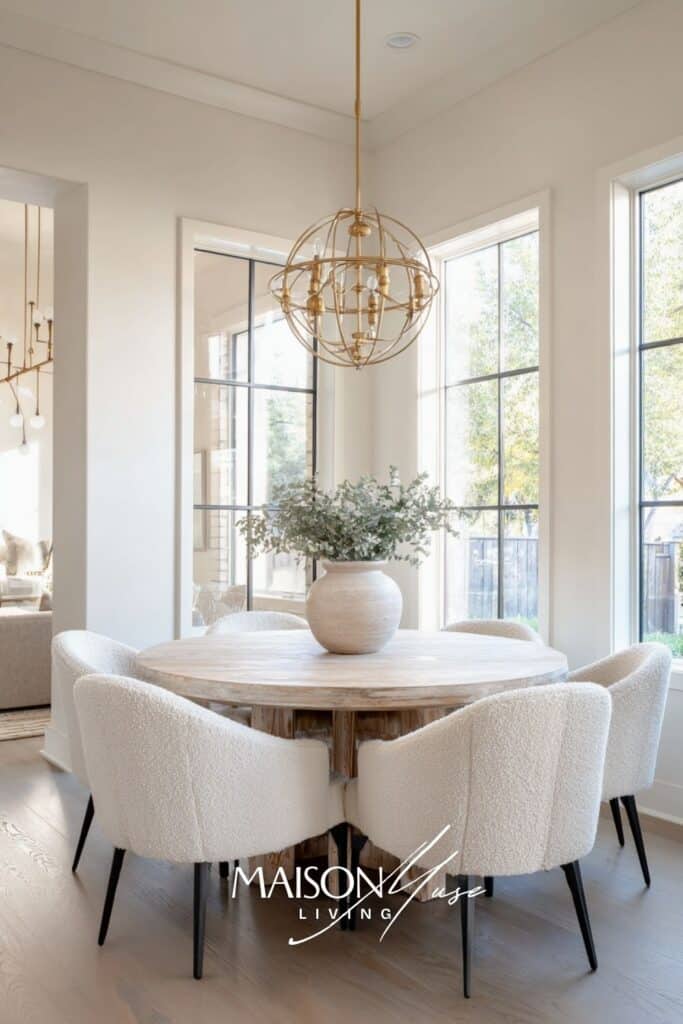
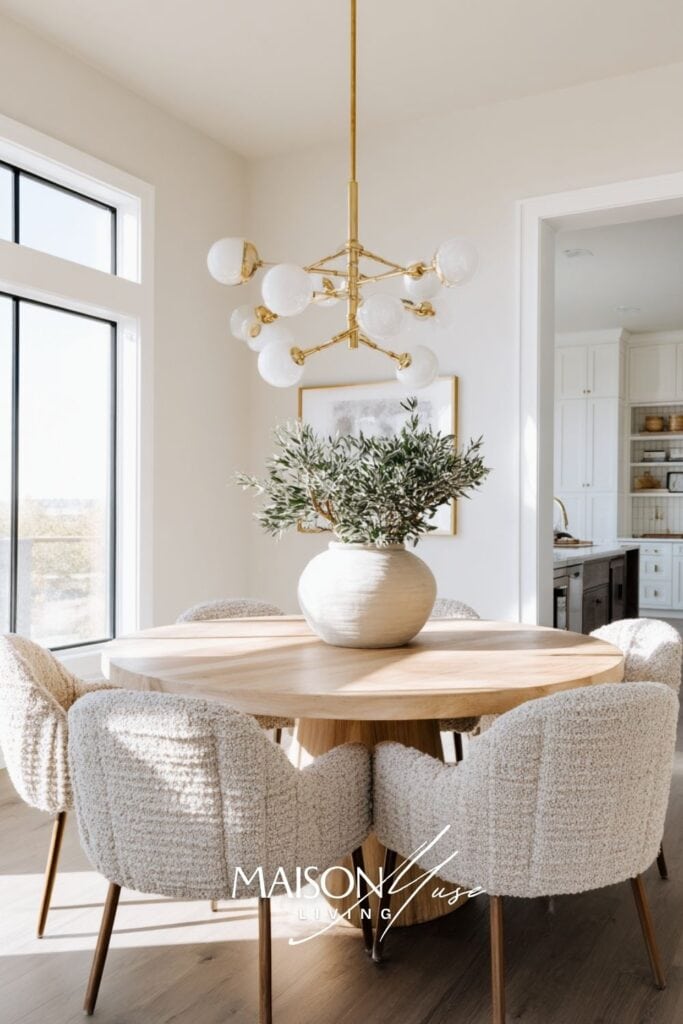
Modern Oak Round Dining Table // Cream Boucle Dining Chairs // Brass Pendant Chandelier
Round: when it’s best
Conversation-friendly and perfect for square rooms or breakfast nooks. A pedestal base gives maximum knee space. Over 60 in / 152 cm diameter the reach becomes awkward, so consider an extendable round or switch to oval if you regularly seat 6–8.
2. Rectangular Dining Tables: A Classic That Fits All Spaces
A rectangular table is timeless and versatile. It’s the go-to shape for most dining rooms because it fits perfectly with long spaces and allows plenty of seating. It’s ideal for families or anyone who loves hosting larger gatherings.
This shape also works beautifully with benches or long slipcovered chairs, depending on your style. To soften the lines, add organic materials like linen runners, ceramic tableware, or a centerpiece of fresh greenery.
Best for: Larger families, rectangular rooms, or open-concept dining areas.
Pro tip: Leave at least 36 inches of space around the table so guests can move comfortably.
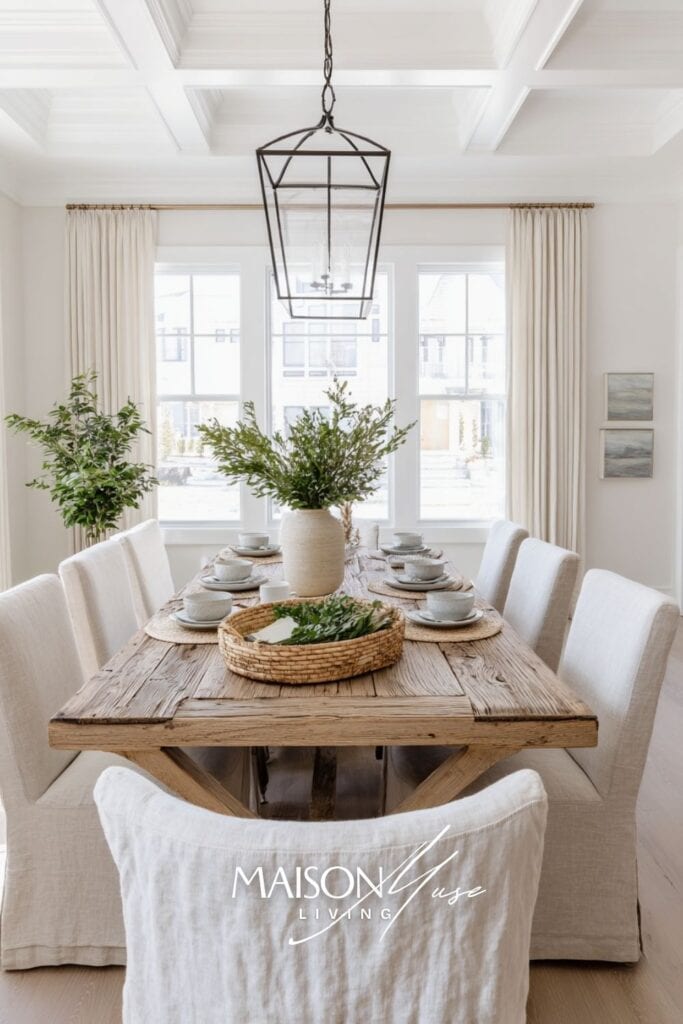
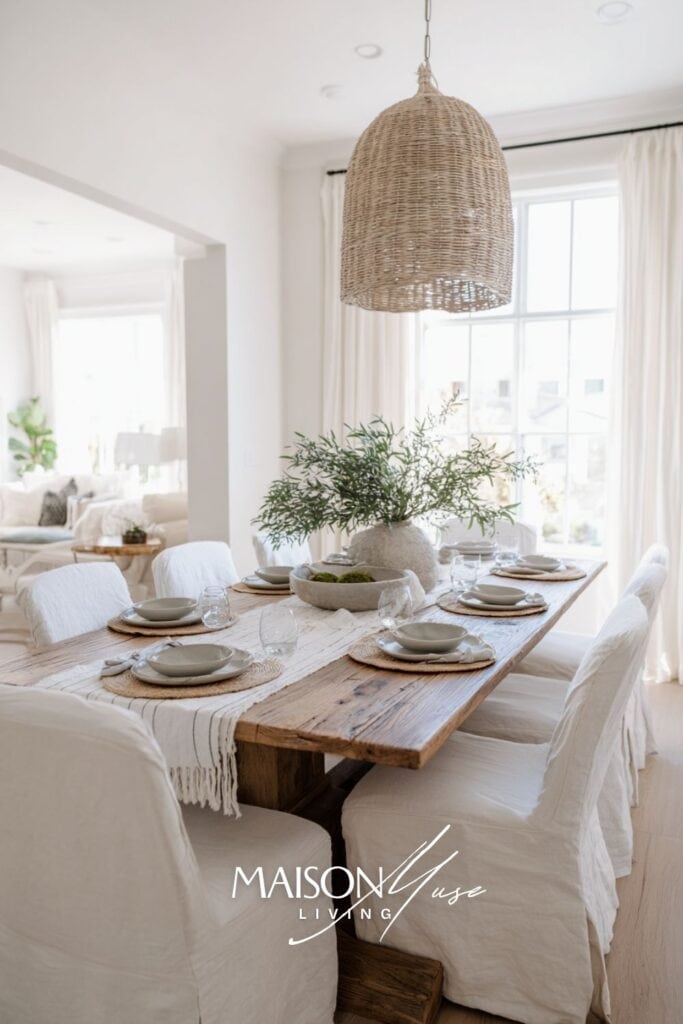
Reclaimed Wood Rectangular Dining Table // Linen Slipcovered Dining Chairs
Rectangle: when it’s best
The most flexible shape for long rooms and families who host often. It plays well with benches and leaves. Corners can be “dead zones” for conversation in small sizes, so keep width to ≤ 38–40 in and use rounded corners if kids or tight walkways are involved. Looks balanced when the room ratio is clearly longer than it is wide.
3. Square Dining Tables: Symmetry and Modern Simplicity
Square dining tables bring a sense of balance and modern structure to your dining area. They’re perfect for creating an intimate setting where everyone has equal space. If your dining area is small and open to your kitchen or living room, this shape can help define the area beautifully.
The key is proportion: make sure your table isn’t too large for your room, as square tables can feel bulky in tight corners. Choose lighter finishes or glass tops to keep the space feeling airy and open.
Best for: Square rooms or small open-plan spaces.
Pro tip: Use a large overhead pendant or chandelier to visually anchor the table.
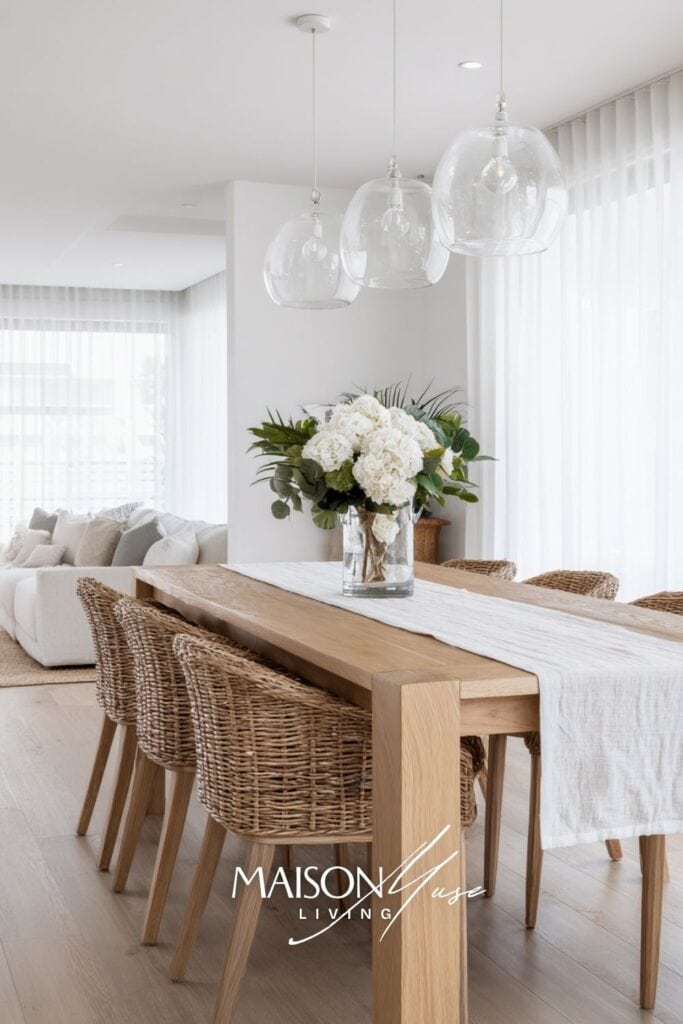
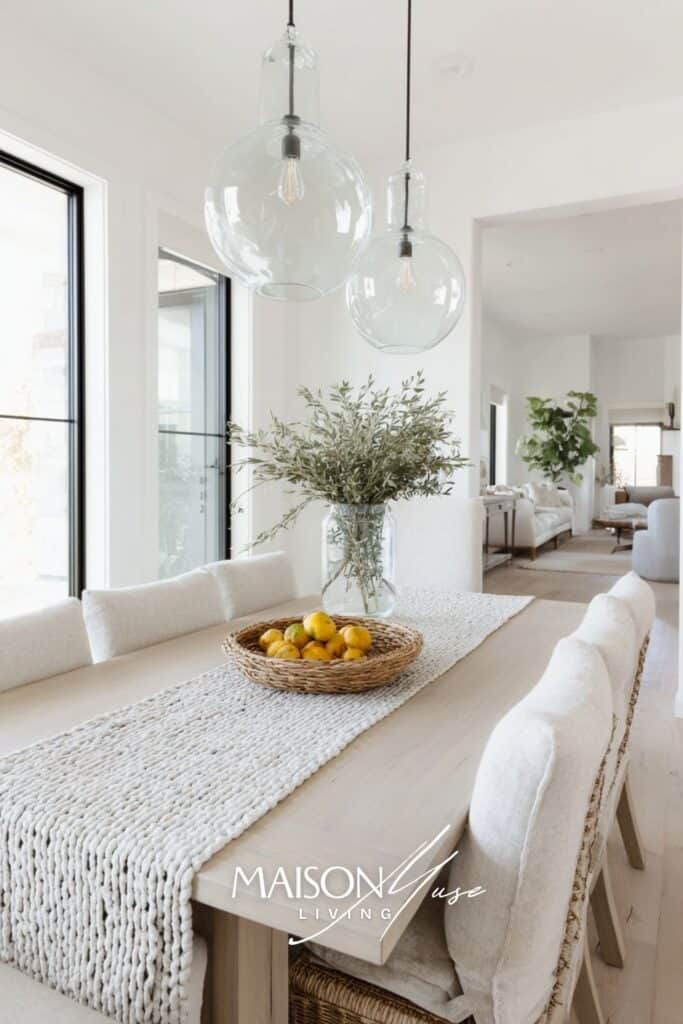
White Oak Square Dining Table // Modern Glass Pendant Light // Woven Linen Table Runner
Square: when it’s best
Great for true square rooms and game nights, everyone gets equal space. Over 48 in / 122 cm it can feel too wide; keep the centerpiece low and use soft edges so it doesn’t read blocky. Two squares pushed together can make an amazing long table for holidays.
4. Oval Dining Tables: Elegant and Space-Saving
If you want the flexibility of a rectangular table but love the softness of rounded edges, an oval dining table gives you the best of both worlds. The curved shape allows for easier movement around the table, perfect for tighter rooms or spaces where kids often run around.
It feels a bit more elegant, too. An oval marble or glass table instantly adds sophistication while still maintaining a cozy, welcoming vibe.
Best for: Medium-sized rooms or transitional spaces.
Pro tip: Add rounded-back chairs to echo the table’s curves and create visual harmony.
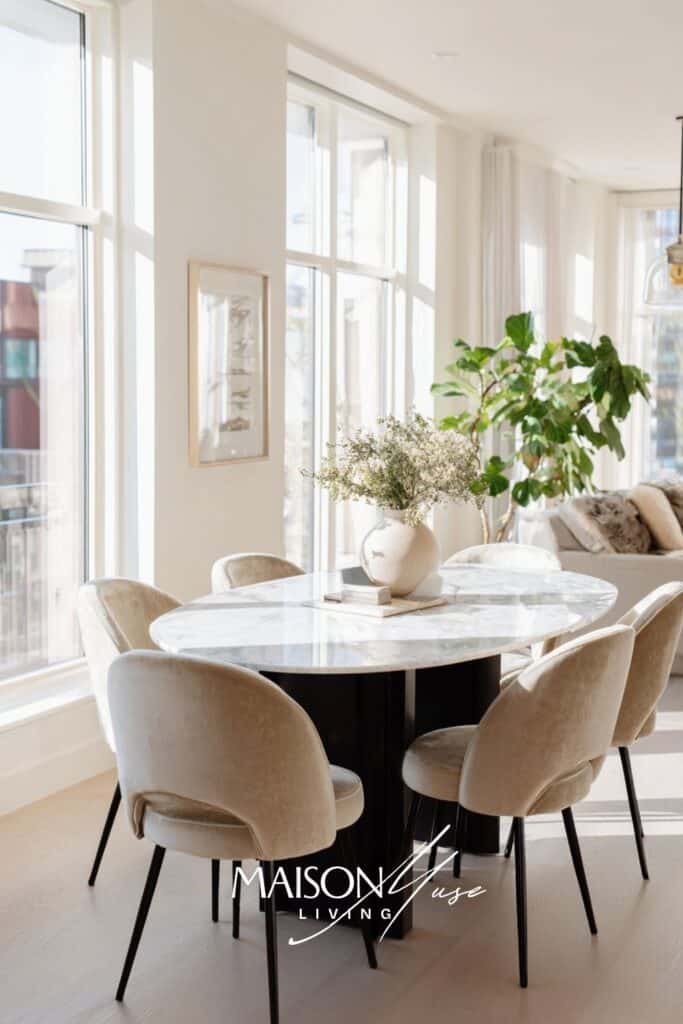

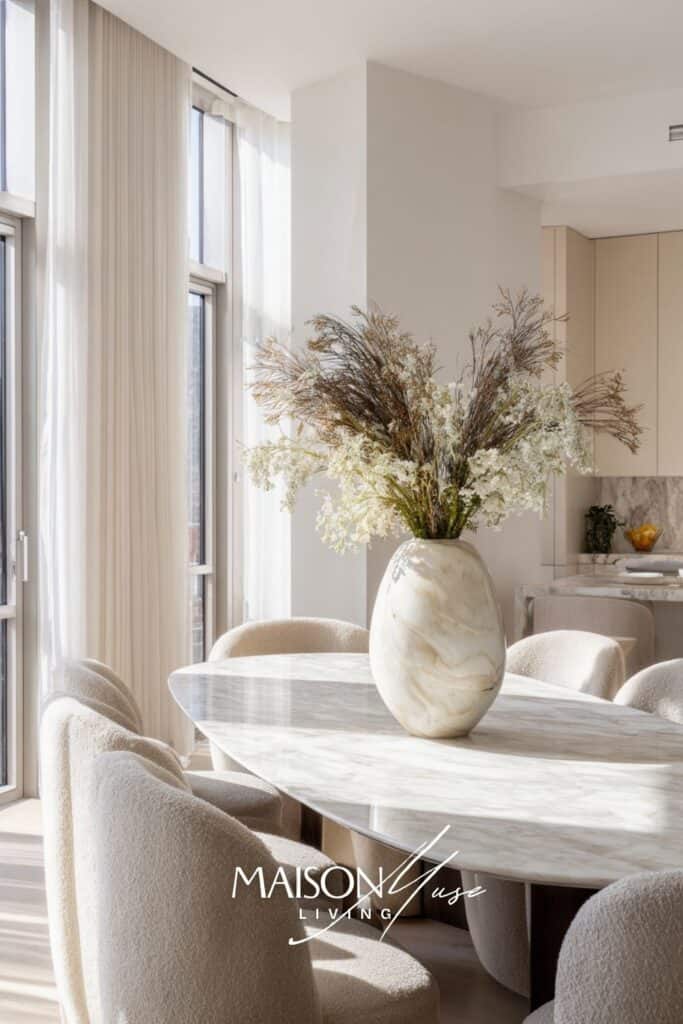
Oval: when it’s best
All the flow of a round with the seating of a rectangle. Those softened ends are brilliant in rooms with tight walkways or lots of pass-through traffic. Pair with simple, straight chairs so the curves stay the star.
5. Extending Dining Tables: The Smart Solution for Flexible Living
If you love hosting but have limited space, an extending dining table gives you the best flexibility. You can keep it compact for everyday meals and extend it for holidays or parties. Many modern designs blend seamlessly with any aesthetic, from Scandinavian to farmhouse-inspired interiors.
Choose one with a durable mechanism and timeless finish, like oak or walnut. When styled well, no one will even notice it’s a space-saver.
Best for: Small to mid-sized homes that occasionally host guests.
Pro tip: Keep a few extra folding chairs or stackable stools tucked away for quick setup.
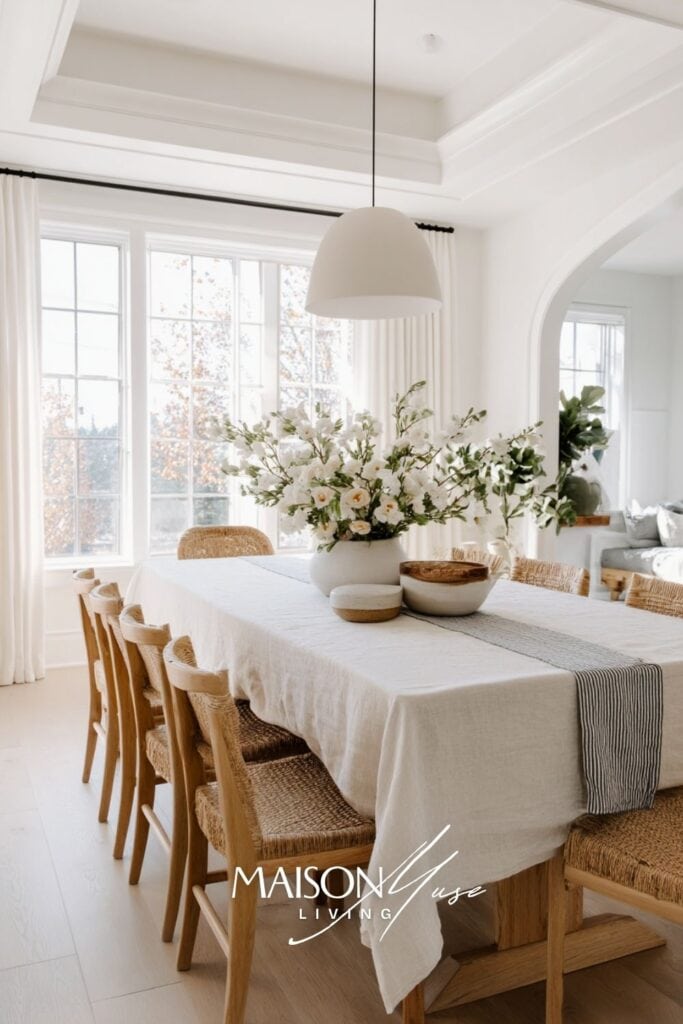
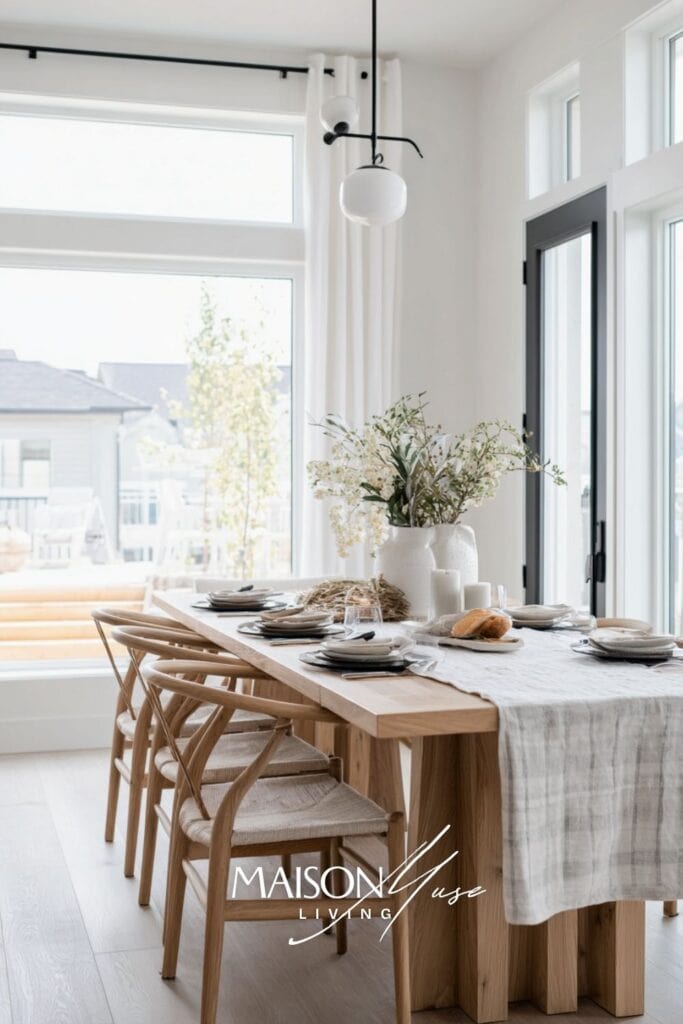
Modern Extending Oak Dining Table // Stackable Wooden Chairs
Extendable: when it’s best
Apartment heroes. Day-to-day small; big on demand. Check the leaf mechanism and apron height for knee clearance, and make sure the leg placement doesn’t “steal” a seat when fully extended.
How to Choose the Right Table Shape for Your Space
When deciding, think about how you live, not just how your dining room looks. If you host large gatherings, go rectangular. For cozy dinners and relaxed conversations, choose round. For a minimalist or modern space, a square or oval design often fits best.
Also, consider how your table works with lighting, traffic flow, and your overall home style. The right shape will feel both beautiful and functional, an invitation to gather, linger, and create memories.
Try This Tonight: Painter’s-Tape Outline
Tape your ideal table size on the floor (and the chair area around it). Live with it for 24 hours: push chairs out, open doors, walk past with a tray. If backpacks, pets, or hips catch the tape constantly, size down 6–12 in / 15–30 cm or switch to an oval.
Common Mistakes & Easy Fixes
- Buying width, not length. A 42″-wide rectangle looks luxurious online but makes passing dishes awkward. Cap width at 38–40″ for everyday flow.
- Ignoring the base. Corner legs on small tables steal seats; a trestle or pedestal frees knees.
- No plan for leaves. If you host 2 – 3x a year, an extendable table beats an oversized fixed top you tolerate daily.
- Rug too small. Add 24 in / 60 cm beyond the table on all sides so chairs stay on the rug even when pulled out.
- Mismatch with room ratio. Narrow rooms want rectangle/oval; square rooms love round/square.
Key Takeaways
Measure first, then choose the shape that matches your room ratio: rectangle/oval for long rooms; round/square for square rooms. Keep 36 – 44 in of clearance, cap width at 38 – 40 in, and check the base for legroom. If you host sometimes, extendable beats oversized. Tape it out, live with it for a day, and pick the size you can move around comfortably, because great dinners need great flow.
Final Thoughts
Choosing the right dining table shape is not just about aesthetics, it is about how your space feels and functions every day. Whether you gather for family breakfasts, host weekend dinners, or work from your dining table during the week, the shape you pick can influence the rhythm of your home. I hope this guide helped you picture what feels right for your lifestyle, from intimate round tables to statement-making rectangular ones. Trust your instincts and let your table reflect how you truly live and connect.
You Might Also Like
If you enjoyed this post, you may also love:
- Minimalist Thanksgiving Decor Ideas for a Simple and Stylish Holiday
- Thanksgiving Table Setting Ideas to Elevate Your Holiday Feast
- Dinner Party Themes Your Guests Will Remember
FAQs about the best Dining Table Shapes
Round and oval tables are the most space-efficient because they eliminate sharp corners and allow better movement.
Rectangular tables usually seat the most guests and are ideal for long rooms or families.
Yes! A round dining table near a rectangular kitchen island can create visual balance and flow.
Square and oval tables are currently trending in modern interior design for their sleek, minimalist profiles.

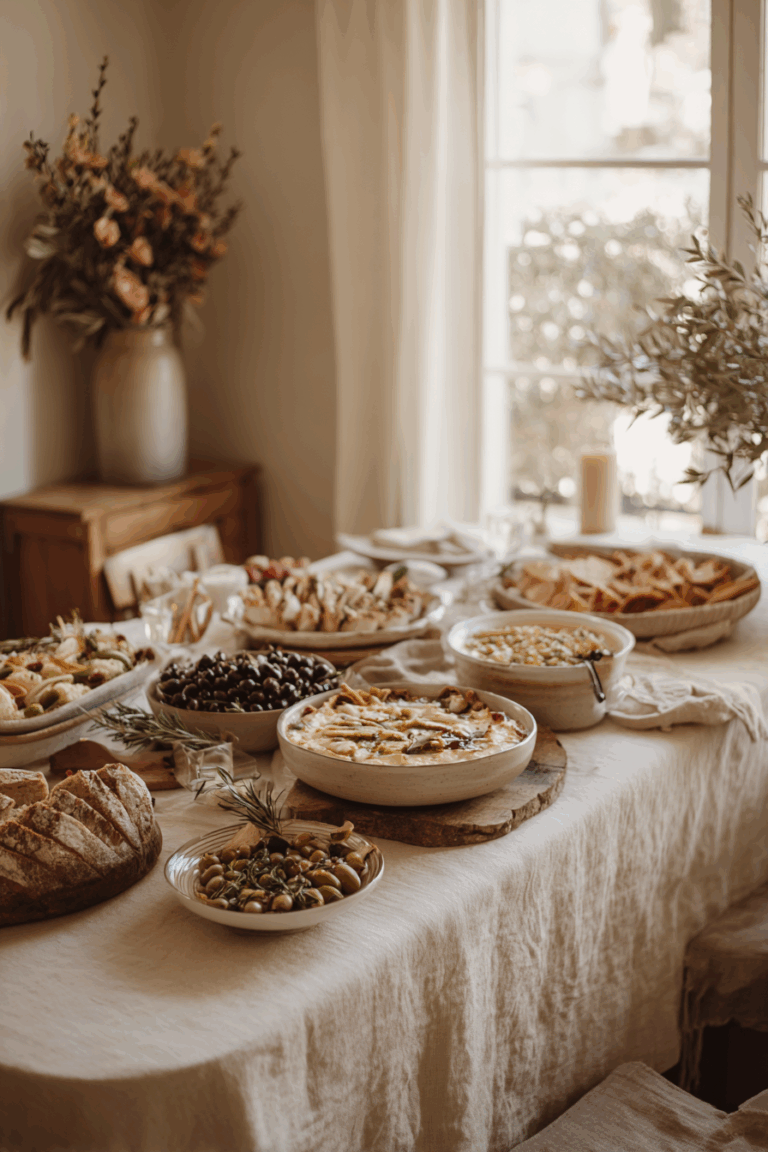


2 Comments